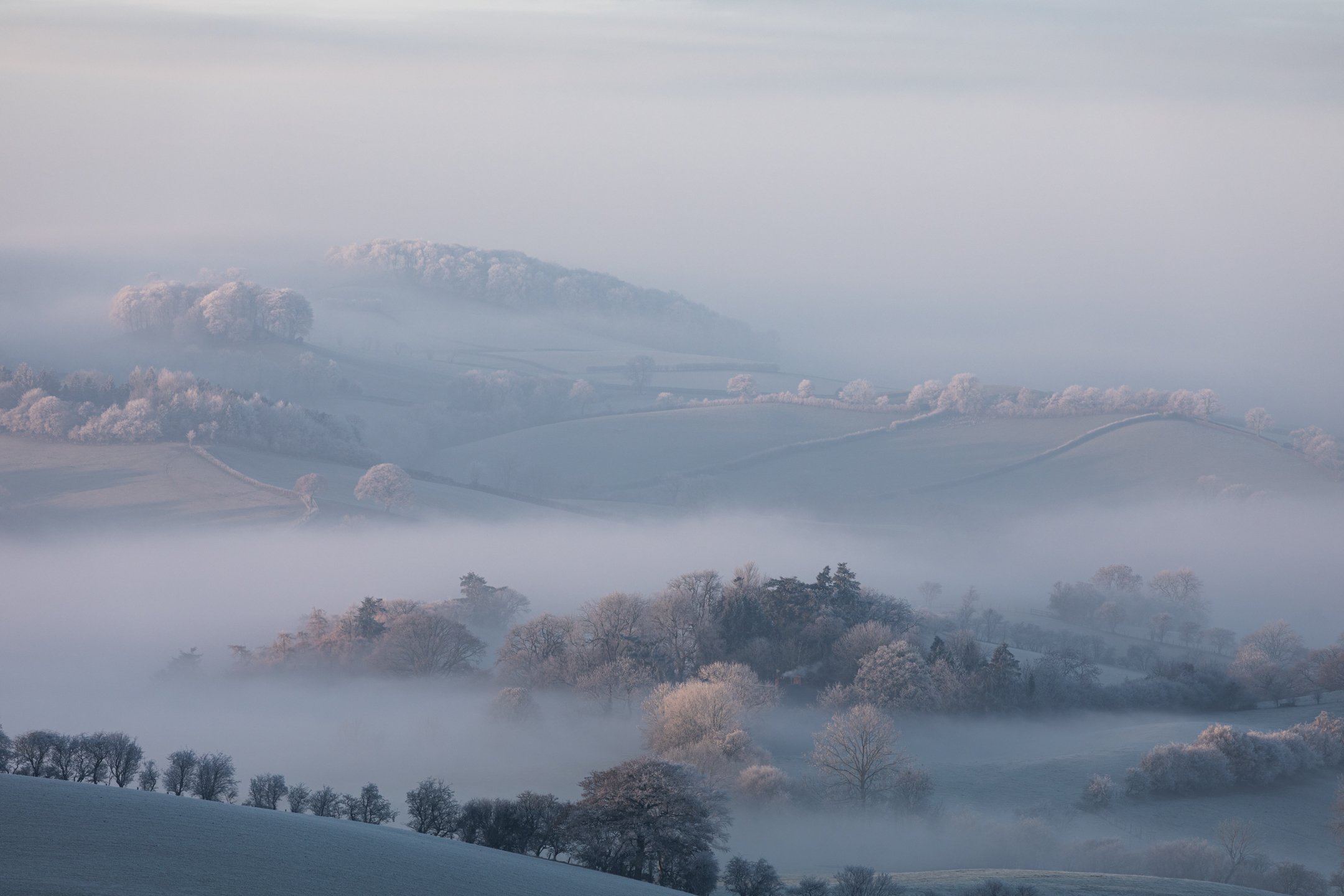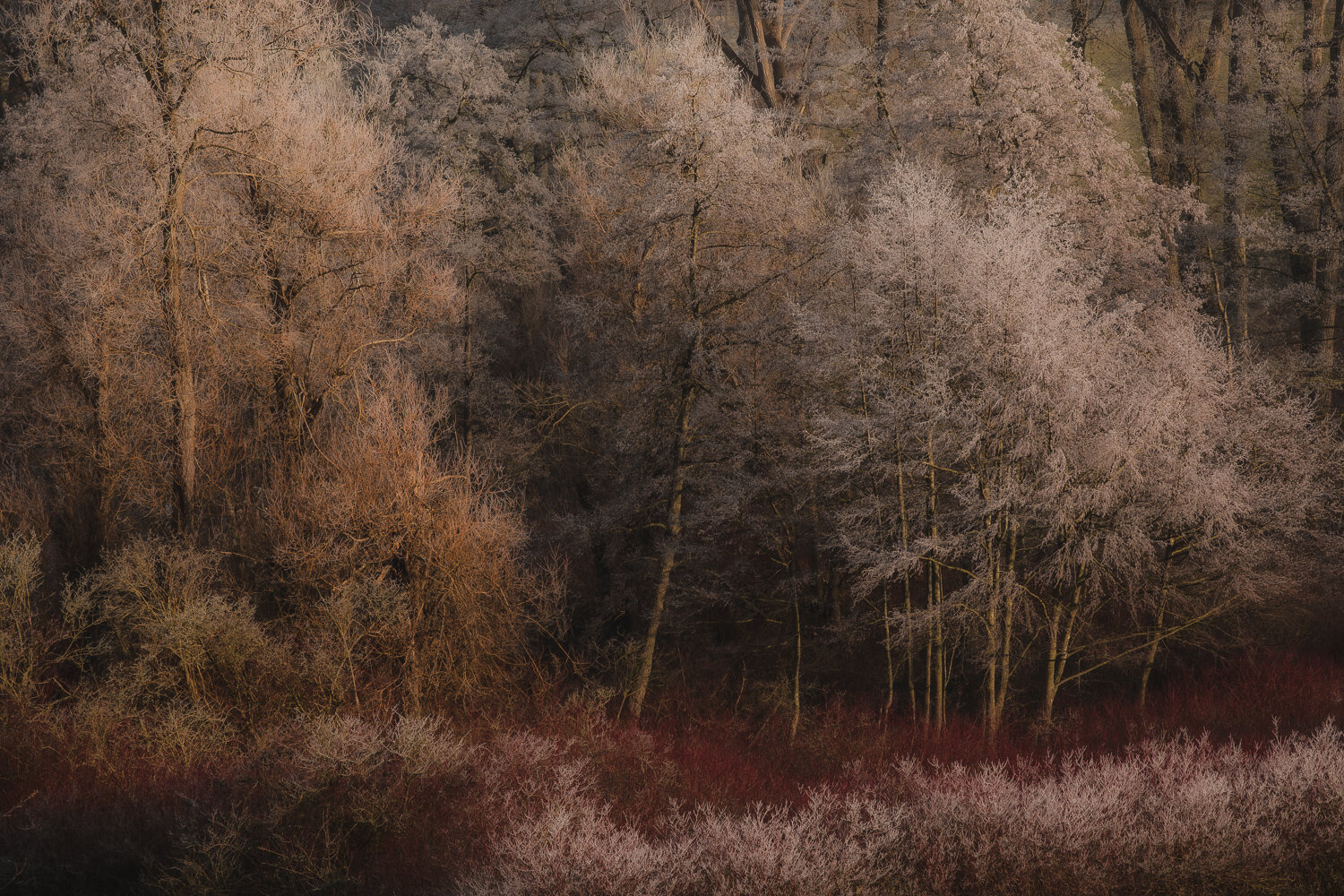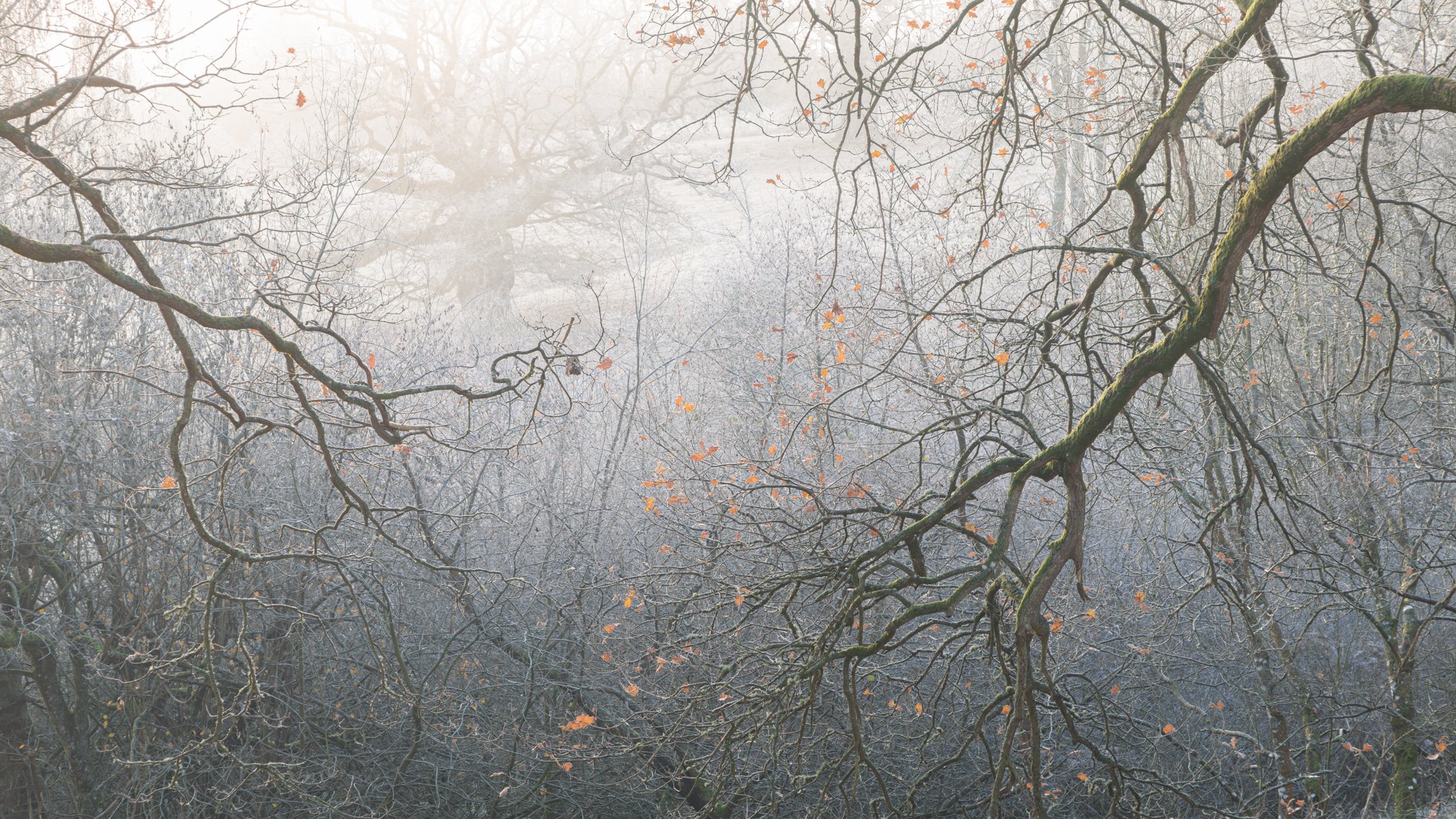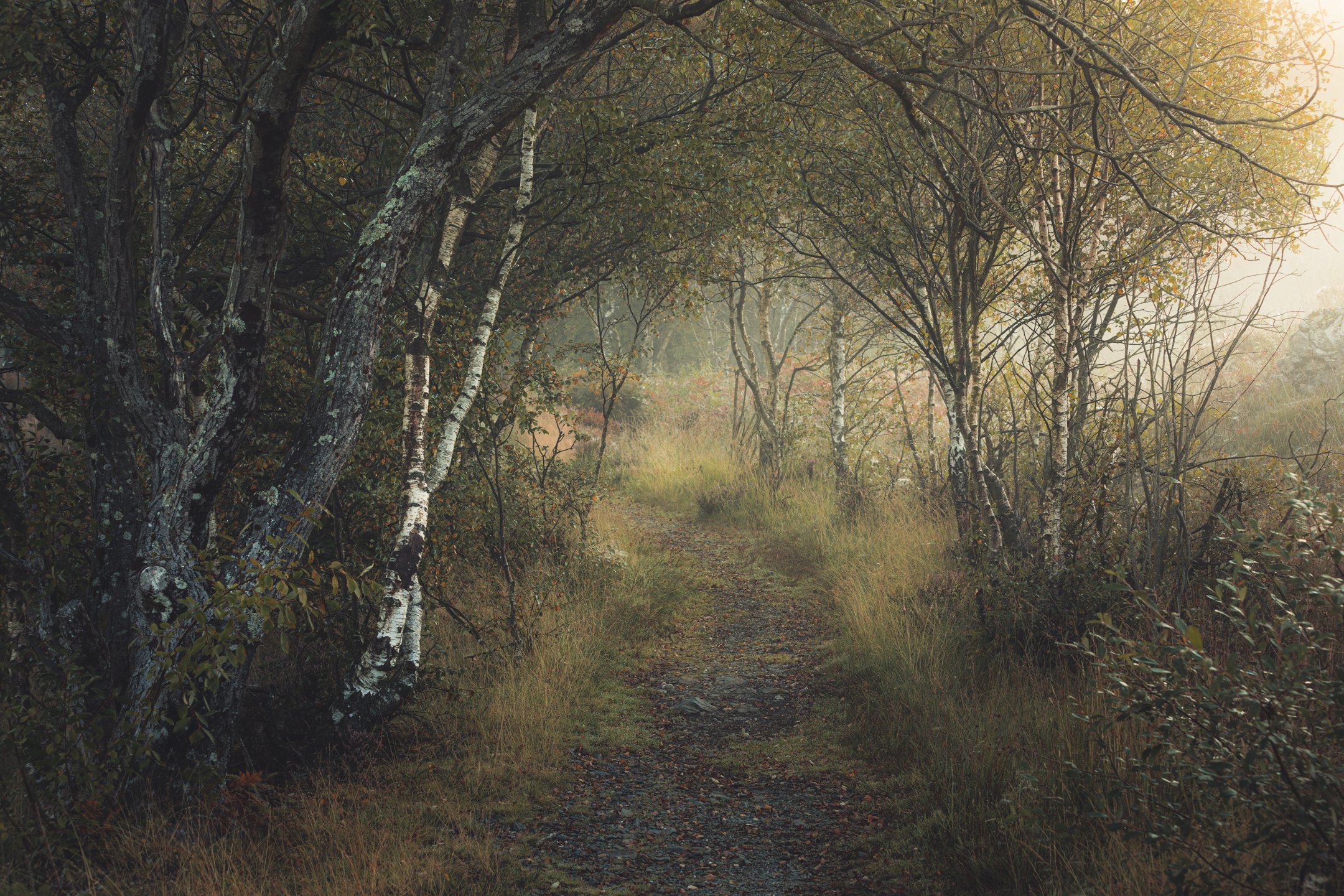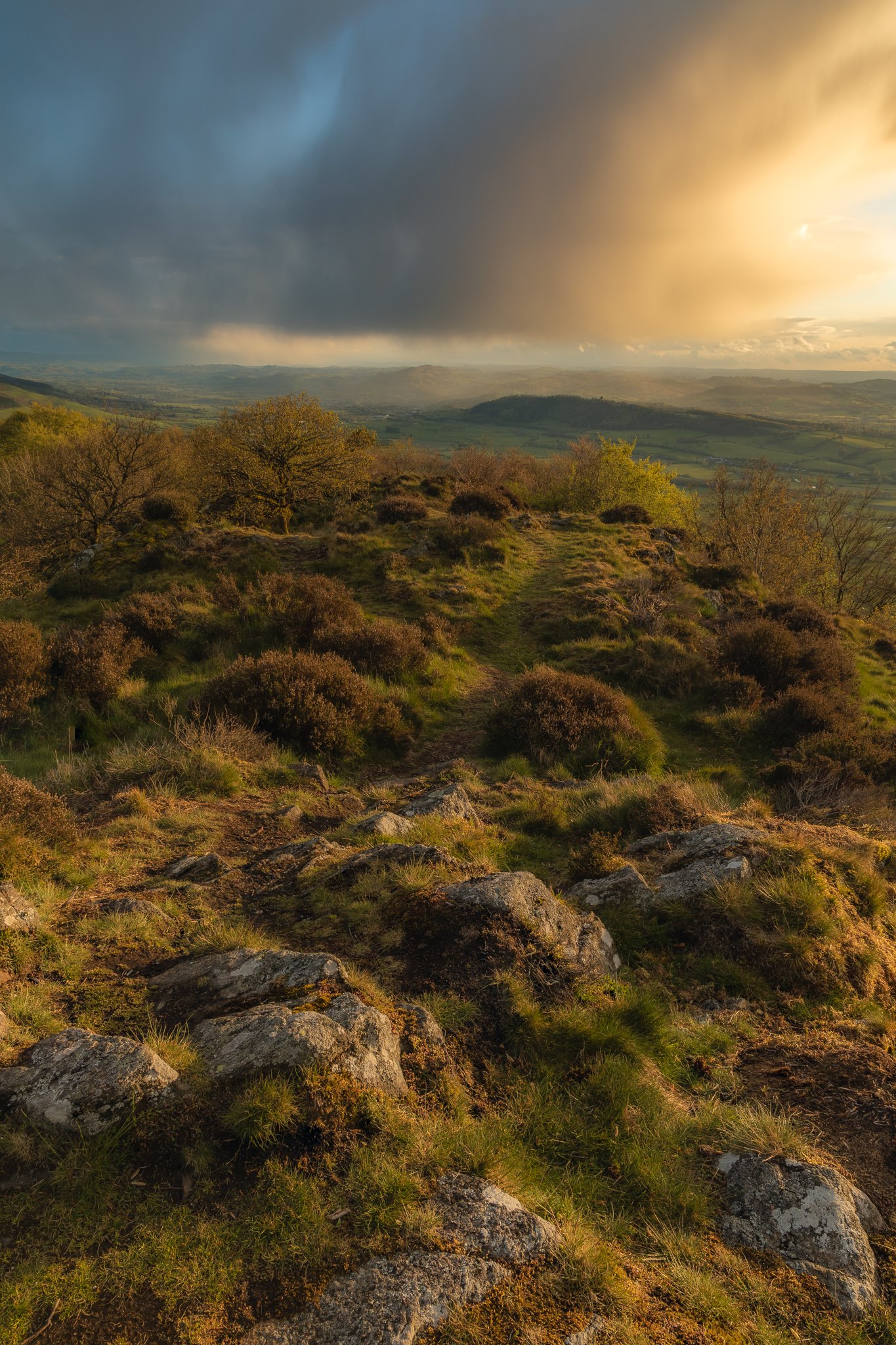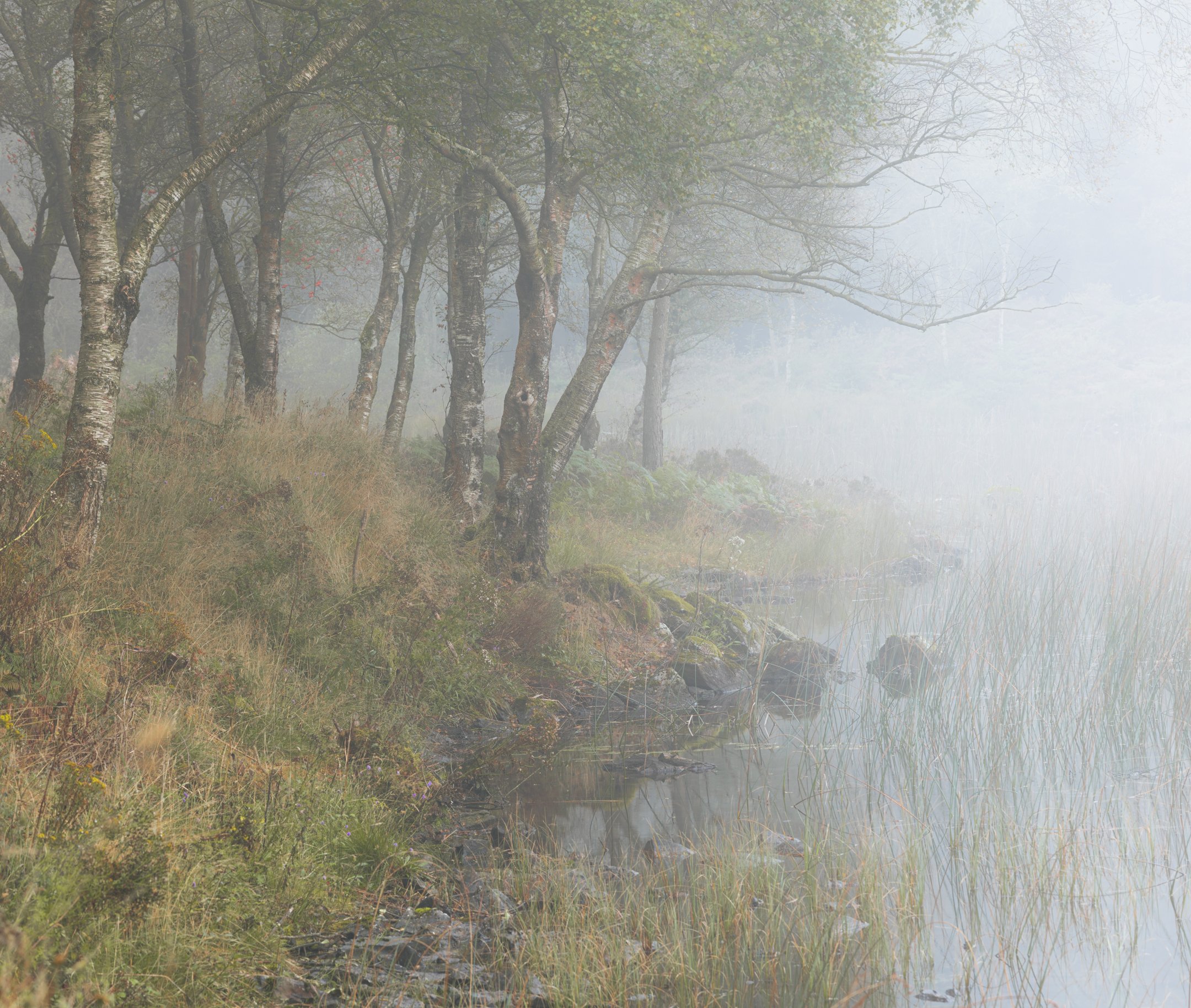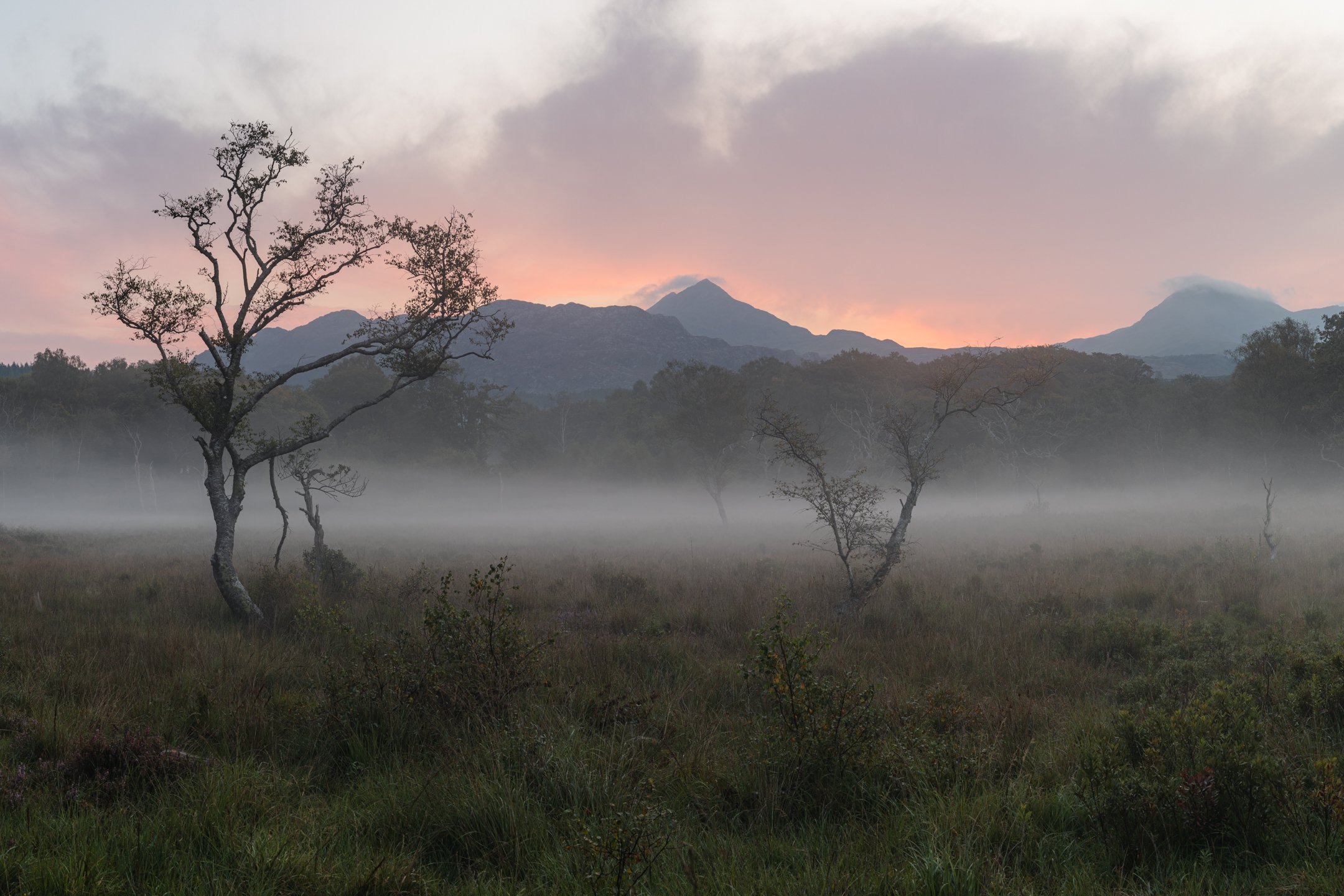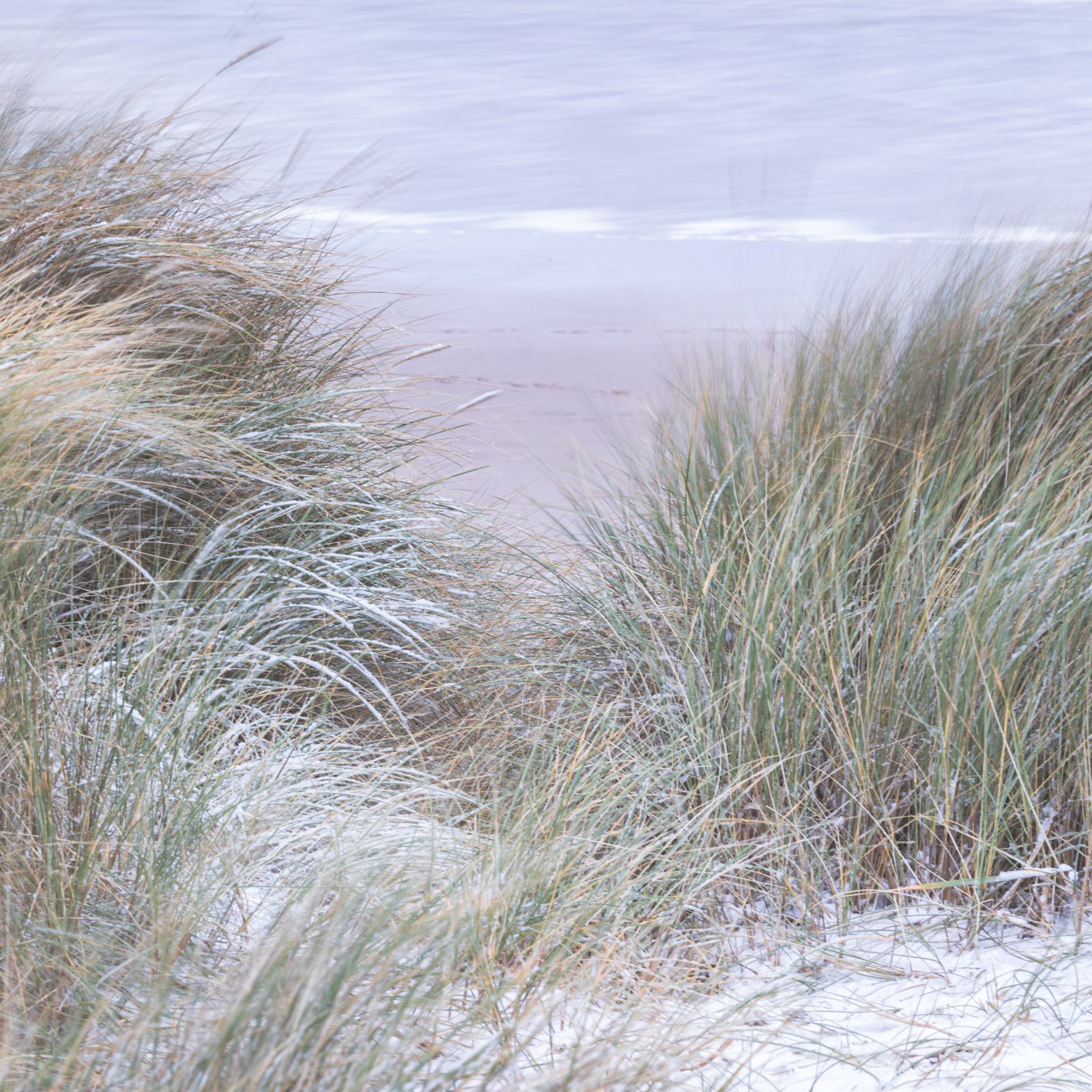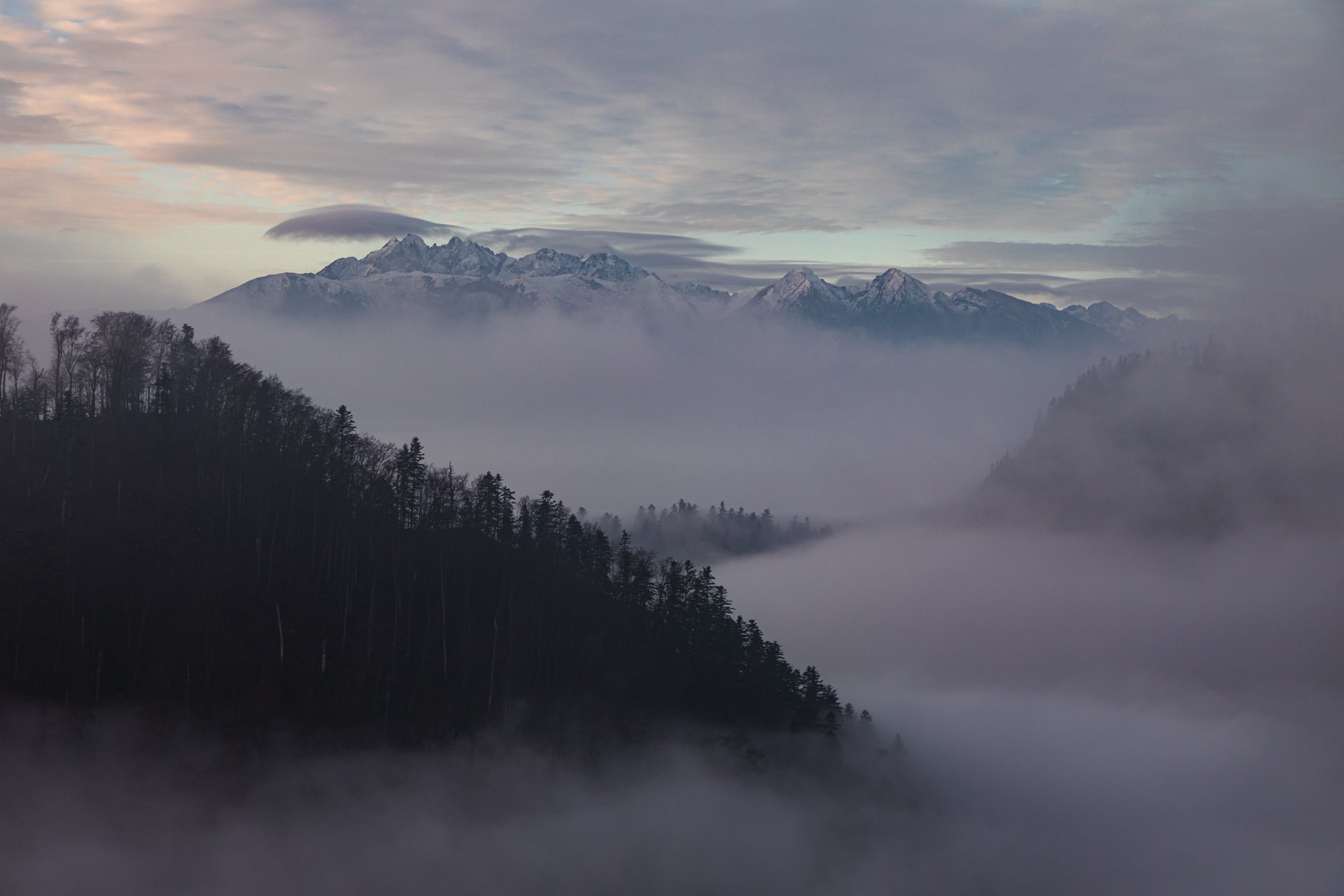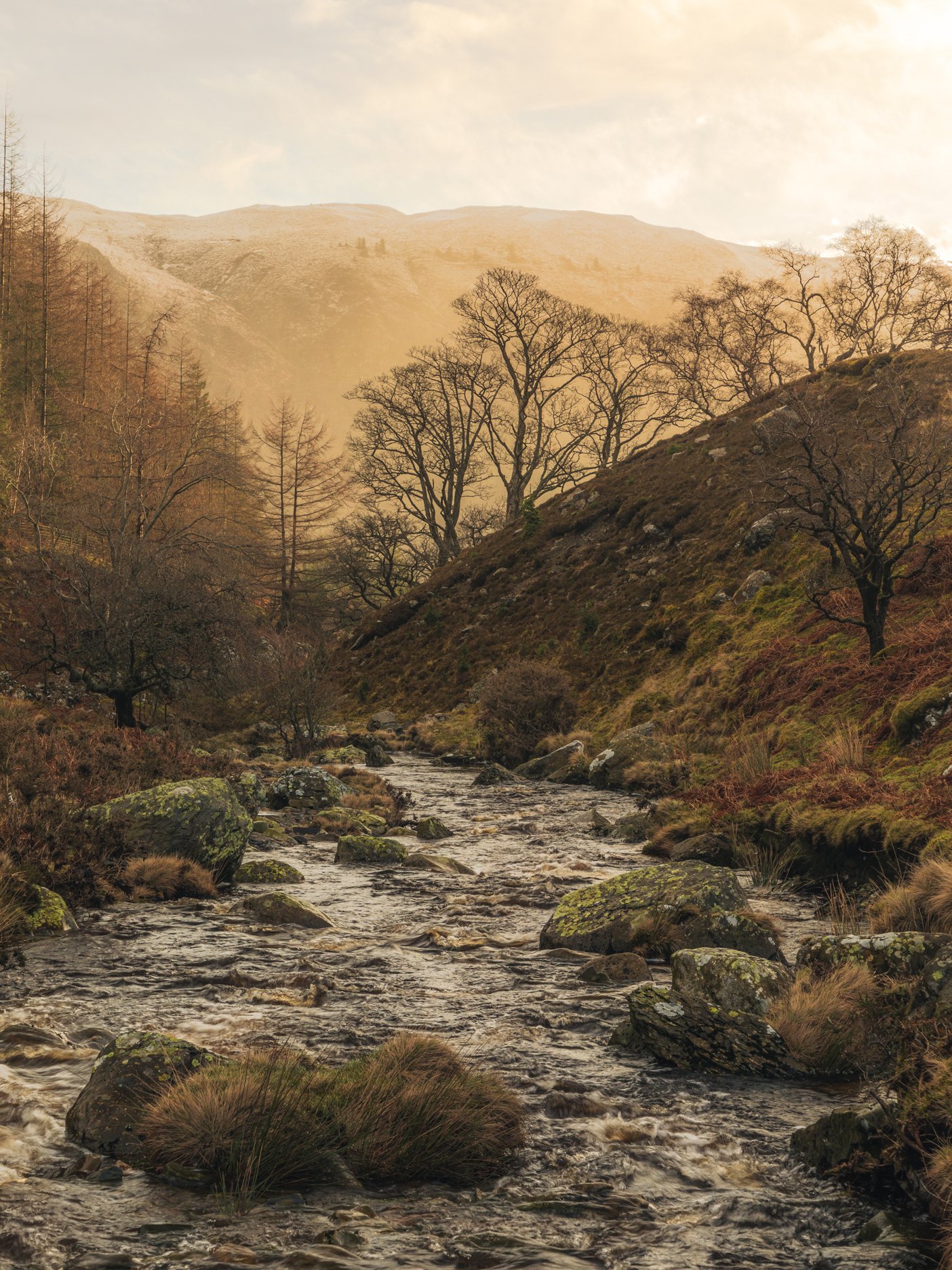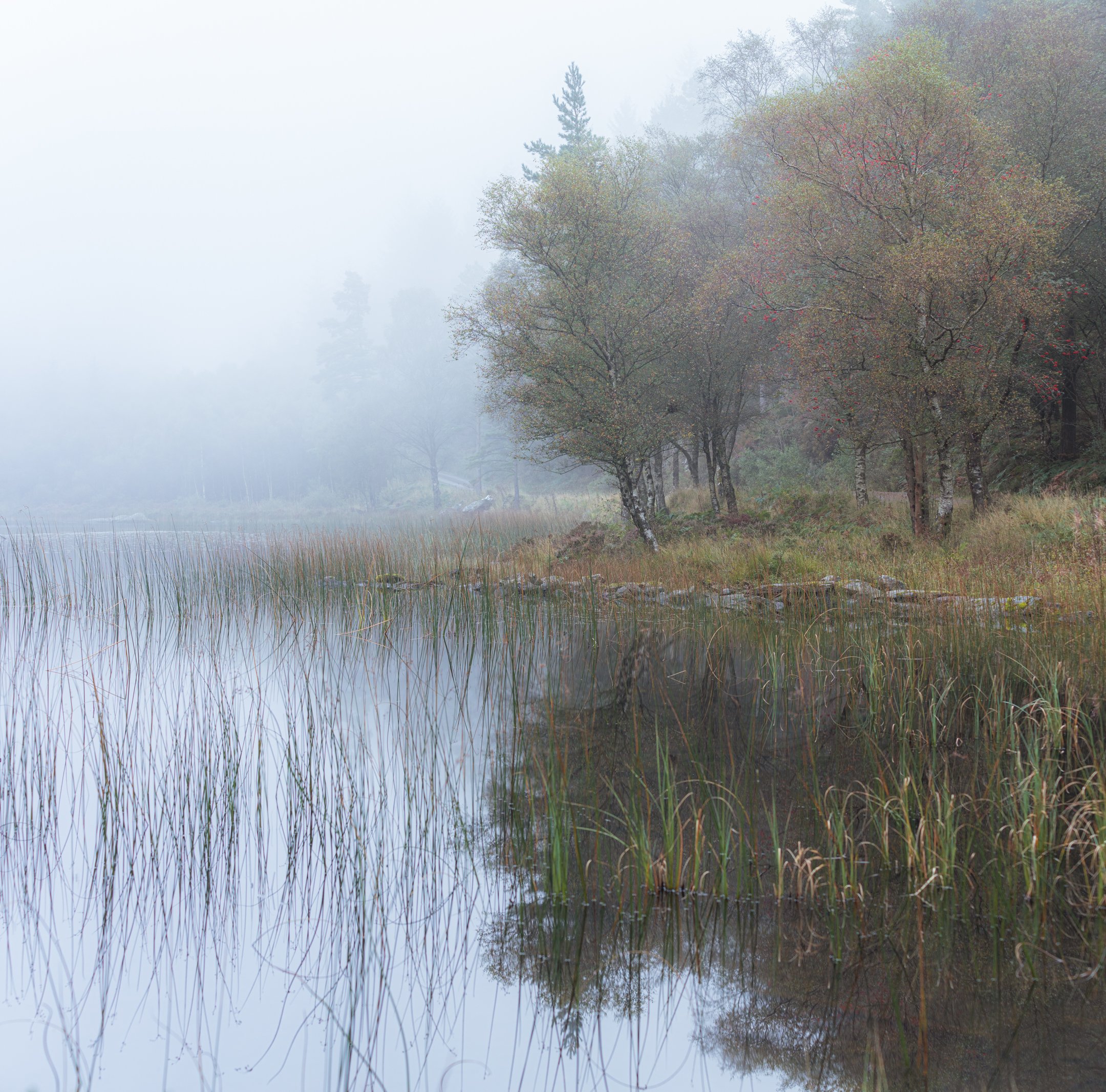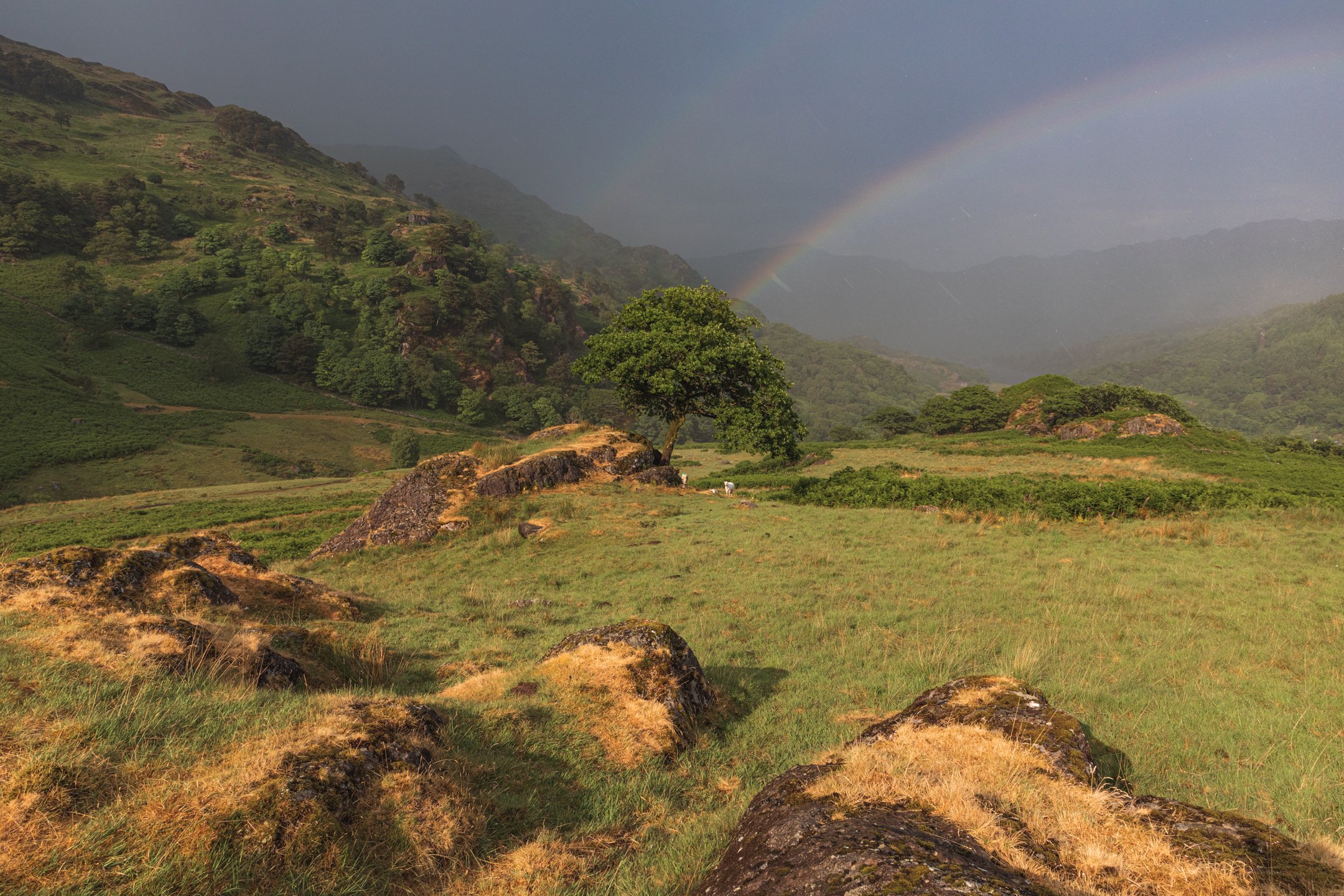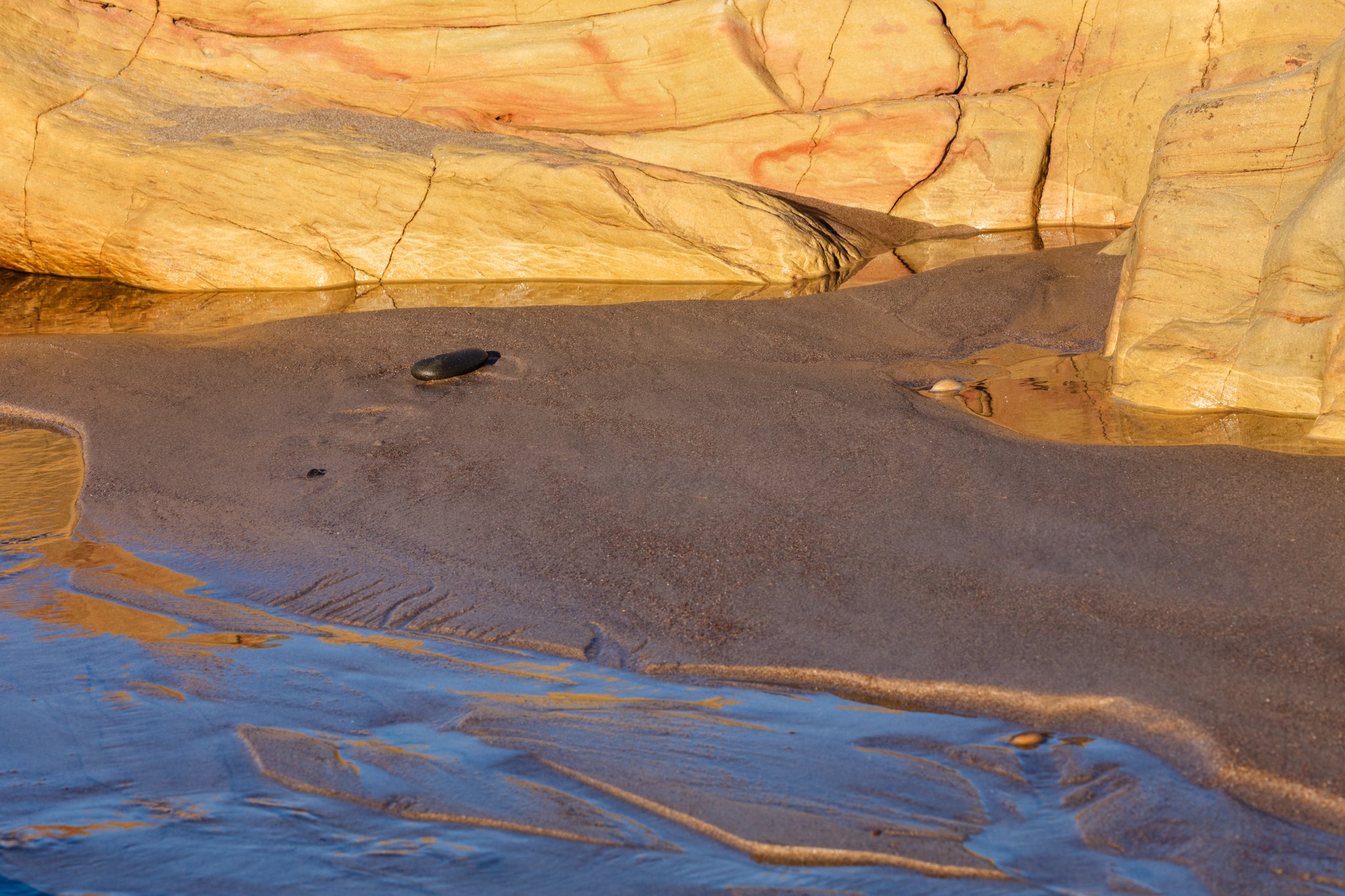How to Improve Your Landscape Photography
Landscape photography is often labelled as the most difficult of all genres of photography. Enthusiastic photographers at recent talks and presentations tell me that they find themselves feeling overwhelmed when standing on top of majestic mountains and amongst the ancient oak trees in Snowdonia’s beautiful woodlands. They wish that they had the necessary skills to take better pictures so that they can accurately translate the emotions that they feel whilst marvelling at such beautiful scenery into a meaningful photograph that helps them to share those feelings with the people closest to them.
There are, I believe, many layers to creating better photographs of nature that we all love so dearly. There are, of course, many technical facets to photography that should first be mastered if a person wishes to take better pictures, such as understanding relevant lenses, cameras and settings, but these can often be complicated, and the art of landscape photography, I always tell people, doesn’t have to be too complicated. This practical guide will be focusing on some of the other sides of the art, including some of the more philosophical, spiritual and psychological facets of landscape photography.
It has always been a part of my vision as a photographer to try to inspire other people like you to get outdoors and make the most of your time in nature. Perhaps I might even be able to share something that helps you to discover your own inner artist in the same way that photography has helped me to unearth mine. It’s why I love writing these photography blog posts and articles. They act as a place for me to share my knowledge and do my part to help humanity in moving forwards by forming a more intimate connection with the planet that houses us all. I really hope that you are able to take something away with you from this blog that will help you to improve your photography and that your time here is made worthwhile. If you feel compelled when finished, you can buy me a coffee at the bottom of the page to say ‘thank you’. Better still, you can support me by purchasing the full edition of my free eBook or coming on a workshop with me.
Without too much more from me, let’s get straight into it. Here are some of the ways in which you can improve your landscape photography:
Follow Your Intuition
‘‘I say, follow your bliss and don't be afraid, and doors will open where you didn't know they were going to be.’’
- Joseph Campbell
The greatest and most influential photographers, I believe, are those that have discovered the places that resonate and strike a chord within the walls of their own hearts. We all have our own personal connection to certain places, and these places are often linked back to our favourite childhood memories. My own connection to the landscape, and the trees and woodland, in particular, can be linked to early adventures beyond my nan and grandads back garden into a woodland that was a sanctuary for me throughout my youth.
I cannot tell you that I consciously knew what I was doing when I took my first walk amongst trees back in 2020 - my hand, in fact, was forced as I was restricted to local footpaths during the pandemic. All I know is that my heart sang a song from its’ deepest corner as I wandered beneath great oaks with my camera and journal in hand, and that I had found a missing part of my soul amidst the magic and mystery of a mist-laden woodland at dawn.
It was my heart that led me to keep wandering aimlessly through the Welsh woodland, and it is my heart, I was always taught, that knows the truth. It is amongst the trees that I seem to have found my success as a photographer in recent years. In the sanctuary and silence of the woodlands that I was visiting to initially photograph trees, I naturally began to reflect upon my life and join some dots to better understand who I was and the events that had shaped me. The trees were my ever-faithful companions and most patient counsellors throughout the extensive, lifechanging creative process. I began to lose myself along the tree-lined footpaths, and it was upon losing myself that I began to find myself. What followed was my first collection of themed photographs that I could use to represent me as an artist, and tell a deeper story rather than simply photographing something beautiful. Trees, it could be said, have meant something to me throughout my entire life, so it seems fitting that I gravitated back to the woodland to tell their stories.
What is it within the landscape that you are drawn to? Is it the silence and peace found beside tranquil lakes, or a darker, louder and more chaotic ocean? Do you find your home in the safety of the enclosed woodland womb or do you prefer to stand alone and exposed to the wild elements upon a mountain? Why do you think this is? Have you always been drawn to these places or is this something that has evolved with time? If so, why the change of heart? Was there a significant life event that caused this shift in the places that you were drawn to?
By asking the question ‘why’, we are forced to dig a little bit deeper within ourselves for the answer. You can ask further ‘why’s’ depending on how deep you wish to go and how many answers you seek. During workshops and camera club presentations, I am often asked how I have improved so quickly with my photography. I believe that it is my obsession with finding out ‘why’ that has led to a deepening of my art, and the evolution of a style within my work. I also believe that these questions are what have helped me to intimately get to know the truest version of myself, and this, I feel, is reflected in my photographs.
Photography Mentoring
If you would like some help to clearly define your ‘why’ in pursuit of creating deeper and more meaningful photographs and stories, or you would like someone to objectively look over your photographs and offer constructive, thought-provoking comments, you might wish to consider my photography mentoring services and ‘Photo Therapy’ portfolio reviews.
2. Understand the Role of Light in Landscape Photography
Where would we be without it? I wouldn’t be here to write this blog, that’s for sure. Light, quite literally, gives us all life here on earth and that is one of the reasons that I like to capture it. But how exactly do you use light to create a meaningful and compelling photograph? There are so many different ways and so many different types and even colours of light; think about the colour of ‘golden hour’ light at sunrise compared to the harsh, white light on a summers day, or the soft, pastel colours during ‘blue hour’. It’s our job as photographers to understand how we can use light to create different effects in our photography. Shooting into the light, shooting with the light, shooting across the light, reflected light, front light, back light, soft light, harsh light, diffused light, dappled light, even light. These phrases might be familiar to you but do you understand the differences that each technique can make to your photographs?
Take a look at both examples below, taken just one day apart. Notice how different light can completely transform a woodland scene, not only in terms of depth and shadow, but also how light interacts with subjects and causes them to appear as different colours before the lens.
(click to enlarge)
Example 1: created at 10am on an overcast morning. ‘Even light’ means that there is minimal contrast between the highlights and shadows in the scene.
Example 2: created at around 8.15am just a day later when the sun was still close to the horizon. Low light creates strong shadows and the softness of the early morning light interacts with the scene to create some lovely colours throughout.
Can you tell from the areas of shadow which direction the light was entering the woodland?
It’s not that one form of light is necessarily better than another, it’s for you to decide which kind of lighting suits a particular scene, depending on the story that you’re trying to tell. If you’re someone that prefers a particular colour scheme or style to your photography, then it might be more important for you to stick to rigid rules when it comes to the times and conditions that you shoot in. For me, I like to make the most of a variety of conditions as I believe that there are always photographs to be created. We are in the UK after all and so you have to learn to embrace whatever weather Mother Nature provides. The example below is where I think the flat, even light helps to tell a compelling story and supplements the overall feeling and mood to the photograph that was created in Snowdonia National Park. How does this style of lighting make you feel? Is this the kind of photograph that you would like to be able to create?
The following example showcases what kind of photograph is possible when the sun is shining throughout the summer, and we can make use of what is known as ‘backlighting’ in photography. This photograph was created at the same lake and features the same congregation of silver birch trees as shown in the photograph above, but you can see a remarkable difference in the light, and, therefore, it invokes a completely contrasting mood and different feelings in a viewer. Which of the two photographs featured above and below do you prefer?
Tip: go outside on a sunny morning or evening and photograph the same subject twice - once with the light over your shoulder, shining directly onto the subject, and again with the light in front of you (behind the subject). Notice how different both photographs look. Try to decide on your preference as this might help you on future photography trips to make quick decisions for potential photographs.
Diffused light is often a woodland photographers favourite kind of light. Early morning fog acts as the perfect diffuser, softening the often too bright and piercing sunlight as it enters into a woodland to cast a lovely glow onto the trunks of trees. This kind of light makes for some of the most delicate and atmospheric scenes, it adds mystery and helps to create a lovely transition from light to dark across the image.
Another prime example of diffused light in a woodland can be seen in the photograph below. This photographs also showcases perfectly how you can utilise the technique called ‘shooting across the light’ to create this beautiful transition of colours in a photograph - warmer tones entering on the left, transitioning beautifully into the cool tones on the right.
After taking a few steps further into the woodland, and turning 45 degrees to the left, I was able to create this photograph by ‘shooting into the light’. Can you notice the consistency of colour created in this one when compared to the photograph above?
Beneath, you can see another great example of ‘shooting into the light’. By using the background mountains to block out the direct sunlight, I was able to manage my exposure without losing any detail in the foreground shadows or background sky. By eliminating any ultra bright areas, you create a well-balanced and evenly-lit photograph. This is how to create these kinds of ‘painterly’ style photographs that so many people strive for in landscape photography. Many people ask me during talks & presentations whether I spend a long time editing photographs to get them looking like this. The answer, I always say, is to get it right in camera first. This is the foundation to creating a photograph in this style. Editing is for fine-tuning only. The secret is in the correct understanding and management of the available light.
3. Equip a Telephoto Lens and Get Intimate with the Landscape
The art of photography transformed when I learnt how to use a telephoto lens for landscape photography. The telephoto lens allowed me to eliminate much of the environment and focus on tiny landscapes and smaller details of nature within the whole. When you experiment with a telephoto lens, you begin to see that there are an infinite number of possibilities from a relatively small location. With a telephoto lens, you can pick out certain details, such as the light reflecting on the lily pads here in this lake in Snowdonia. It is a simple photograph, but these, I believe, are often the ones that make an impact, especially when compiled as part of a small series of intimate photographs that tell a variety of different stories of the whole landscape and add a sense of mystery in your viewers mind.
By using the telephoto lens, standing higher than our chosen subject and shooting down at an angle, we also have the option to eliminate the sky from our photographs. As the human eye is so used to seeing the sky, or at least a horizon line, the exclusion of one them, adds further mystery and complexity to a landscape. With the telephoto lens attached, textures within the landscape become interesting, and, by eliminating the sky, the photograph becomes less about the scene and more about the intended story of these textures and details.
With the trained photographic eye, the artist learns to look beyond the immediately obvious composition for a more unique and interesting perspective on a location. Through the practice of photography, one begins to experiment with different angles and focal lengths in an attempt to create something completely unique and add interest to their creation. It is through the practice of photography that the abstract and out-of-the-box thinkers are rewarded with more interesting, thought-provoking and conversation-opening photographs. If you wish to create the kind of photographs that capture a viewers imagination, invoke a sense of mystery and tell a unique and interesting story from the landscape, then you are going to want to learn how to effectively use a telephoto lens whilst on location.
Tip: Go out to your favourite location taking only your telephoto lens. Look around at the landscape through the camera and get used to ‘seeing like a telephoto lens.’
4. Study One Area & Get To Know It Intimately
To begin creating photographs of the landscape that are laden with depth and meaning, I believe that it takes dedication and intention. A person can’t expect to turn up to a location once and immediately realise its’ absolute photographic potential. The process of developing portfolio-worthy photographs, I believe, is a long and arduous one. These kinds of photographs are an evolution - they are a layering of compositions, interactions within the landscape and ideas over time. Not only does a location evolve over time, but so do we. Every time we return to a place, we have accrued new experiences and changed somewhat, just like the seasons of nature themselves. This can lead to an altering, sometimes significantly, in the way that we see a location.
The most impactful photographs are those that have been produced after a long period of time spent connecting with a specific area of the landscape. The melancholic collection of silver birch photographs below - ones that seem to strike a particular resonance with audiences at presentations - were created three years after my initial discovery of this lesser-trodden area close to my old home in mid Wales.
Photographs aren’t always immediately obvious to the eyes, and it is easy for us to find ourselves in a state of overwhelm upon our first steps along new footpaths. It takes time to get to know a place intimately, and, to add to that complexity, through our interactions with a chosen landscape, we are getting to know new sides to ourselves, too. It takes a lot of time to ‘get the eye in’, so to speak, and to dig down into ourselves to better reflect the story of the inner landscape in the one that is outside of us.
My own creative process is often about reflecting current life experiences and emotional states in the photographs that I am creating. By raising my awareness of and understanding my own inner world, something that I have intuitively done for as long as I remember, I believe that this might have an impact on the kinds of scenes that I am drawn to on a given day and the stories, therefore, that I wish to tell.
By spending excessive amounts of time within a chosen landscape, we allow our awareness to gravitate towards what it is that we are actually interested in photographing. Perhaps certain colours will begin to appear to our eyes, or arrangements within the trees, for example. We might notice symmetrical structures of trunks and the pleasing balance between a congregation of silver birch. Once we have built this awareness around what it is that we are actually drawn to photograph, our decisions about where to go next on our creative journeys become easier to make.
Evolve your Vision with My Landscape Photography Composition eBook
This is Volume 1 of my comprehensive 125+ page eBook that contains insights into my creative approach to landscape and nature photography. Each section has multiple examples and is applicable to all standards of photography. Whether you are looking to make a step change in your photography, or just looking for ideas to improve your compositions when out in the field, this e-Book contains the tools to help you.
The eBook contains detailed information on:
How to use different focal lengths to help tell meaningful stories in your photography.
Understanding of ‘rules’ in photography and how to break them to find and develop your own creative style.
Creating depth in your photographs using foregrounds, different apertures and light.
And many many more useful tips including bonus sections on understanding light and using emotions and storytelling.
Purchasing volume 1 of this comprehensive e-Book will give you lifetime access to further volumes that will be released as my knowledge increases and I receive feedback for customers. If you purchase this, please feel welcome to review and provide feedback so that I can make improvements to future volumes.
5. Prioritise Connection with the Landscape
In recent times, I have written passionately about the impact that Nature and the landscape has had on me on a personal, spiritual and psychological level. It has been instrumental in my own healing journey as I have found peace following a turbulent childhood that was overshadowed with episodes of domestic abuse and violence. I have made it a part of my purpose to stand as a messenger for the spirit of Mother Nature and shout from the rooftops about the impacts that she can have on the human spirit. Photography, I believe, can be used for great purposes. We are, as photographers, in fact, storytellers, and with that comes a big responsibility to protect and nurture future generations through the stories that we choose to tell today.
The beauty of being a landscape photographer is not in the photographs that we accrue throughout our journey towards creativity, but in the precious moments spent with Nature; away from the busyness of every day life; in touch with our deeper existence. As artists, the real beauty and benefit of practicing photography is in who we become through our chosen creative pursuit and interactions with the natural world that inevitably leaves its’ mark on everyone in some way. It is important, I believe, in this dopamine-driven world that offers such cheap rewards for our pursuits, that we remind ourselves occasionally of the real reasons why we chose to pick up our cameras to head out into the landscape in the first place.
By deepening our connection with a chosen landscape, I believe that this results in the most powerful and compelling photographs. Once we have exhausted the obvious possibilities for photographs, we are forced to look beyond and venture into the unknown, experimenting with potential new compositions to evolve our vision and develop our craft. In this state of imagination and wonder, we engage the childs’ mind, and this is where growth as an artist can really take place.
6. Be Present and React to the Landscape
I stood alone in the heart of the Berwyn mountains. Overnight, a sprinkling of snow had fallen, peppering the tops of the mountains that surround Lake Vyrnwy. As the water gushed down from Rhiwargor, past the ancient silver birch trees and along the grassy banks, I approached excitedly with my laces tight and rucksack in tow.
I had one of those feelings that something special was going to happen that morning. The forecast looked good for some atmosphere and breaks in the cloud which may allow for the sun to brush its’ delicate strokes across the landscape. The scene had already stood out to me as one with a lot of potential during the autumn months that preceded. I knew that the snow-capped mountains behind were going to look enchanting with the gently curving stream carrying the eye along the tree-lined embankment and into the expanse.
What happened next, and for only a matter of seconds, could never have been foreseen, and might never be seen again in my lifetime. A fleeting sleet and snowstorm passed over my head. As it swept beyond the gathering of trees ahead of me and into the distant mountains, beneath which the lake sleeps peacefully, the clouds briefly parted. A flash of gorgeous golden light filled the valley from the east. Time stood still for a moment as I scrambled frantically back to my camera. I felt new life enter my tired eyes. The flash of delicate, morning light backlit the drizzle and sleet beautifully. The glow of the burning embers brought to attention the silhouetted old guard of ancient silver birch trees that appeared to me to be charging over the hill and away into the promise of the mornings’ light.
These precious moments as a landscape photographer are few and far between. Months without reward for our creative efforts can quickly be forgotten as the rush of endorphins sedate the brain. The thrill of the chase is ingrained deeply in our psyche. Hunting for a photograph and accompanying story must provide similar feelings to those that our ancestors experienced whilst out hunting to provide food for the family. This quest deeply satiates me and eases my own spiritual hunger. I am reminded during fleeting moments like these of what it means to be a human.
The creation of the above photograph required me to be so tuned in to the landscape - so connected and so present - that my mind could not be anywhere else but right here in the now… In this very moment… Not thinking about what I was going to have for dinner when I got back… Not thinking about whether I had filed my accounts accurately… Not thinking at all, in fact. Photographs like these, epitomise what it means to be a landscape photographer, I believe. To be truly in a state of pure creativity requires a person to be fully immersed in their craft. This state, where every sense is engaged, is when a human being is at their highest level of consciousness. From this place comes some of the most interesting, rewarding and meaningful photographs.
7. Reflect Upon Your Photographs
I mentioned earlier that I like to use photography as a vehicle for personal and spiritual development. Before I found my home behind the camera, I found solace whilst sat at my journal with a pen in hand, and before that, I was a personal trainer that was completely obsessed with personal growth and ‘becoming the best version of myself’. I have found a way to carry forth my love of personal development and inner transformation into my art, proceeding to pursue self-mastery through photography and writing as a creative practice. Photography is more impulsive, intuitive, and reactive, whilst the writing side of my practice involves logical, analytical and rational thought. Together, I have found a Yin Yang approach to creativity, integrating two halves of the psyche as a means for personal and spiritual growth and development.
A photograph, it could be said, comes from the subconscious mind - a reaction to fleeting light or lesser-seen beauty. In the moment, it is sometimes difficult to work out exactly why we were drawn to create a certain photograph, when there are usually a whole myriad of possibilities within a certain location. This is certainly true as we become more accomplished in our craft and decisions about where to look or where to stand are made, perhaps, more intuitively and instinctively.
In my essay, titled, ‘A Bridge Between Two Worlds’, I write:
‘‘The camera is the bridge that connects these two worlds. Not only does it capture what it sees in the external world that is so familiar to us all, but it reflects, at the same time, the inner world of the artist; one that is completely unique and so often unknown and unseen, even by the artists’ eyes at times.’’
So, with that in mind, what might your photographs be saying about you as an artist?
Perhaps it is time to think a little deeper about your work, and ask yourself whether there is a consistency of emotions that are expressed through your photographs.
When I began further reflecting upon the following body of work from around Eryri (Snowdonia) after I had created the photographs, I realised that, along with many other photographs I had created, there was a theme of ‘stillness’ running through them. I began to meditate upon this theme, and ask myself ‘why?’ Eighteen months or so after I had created the portfolio of photographs of these birch trees beside the still waters, I produced an essay, titled, ‘Seeking Stillness’ - an essay that features in my upcoming debut photobook ‘Finding Light’ and proved, at the time, to be one of the most significant pieces of writing that I had produced.
8. Find Your Own Sources of Inspiration
Inspiration is everywhere. Don’t just look towards other photographers for it, although that can help, of course. Sometimes, studying other photographers’ work too intently can stifle a persons’ creative growth, however. We can easily get caught up trying to imitate them, or lose ourselves in comparison, denting confidence and fuelling self-sabotaging thoughts. Personally, I have never been too interested in studying the works of other photographers too deeply. I have, however, found great satisfaction in losing myself to the imaginative worlds of 19th and 20th Century oil painters - particularly those that had painted the beautiful landscapes of Wales.
What inspires you personally? I have always found endless inspiration within books and films. Ever since I was young I have enjoyed getting lost inside of a great story, and I still do to this day. Music is one of my biggest inspirations, and I love to listen to music with a deep, soulful and authentic story contained within the lyrics. Much of my writing has been inspired in some way by music, and a simple line of my favourite song can inspire me to write poetry of my own. It is much the same with my photography - many of my photographs have been inspired by stories found in songs and films.
“You don't make a photograph just with a camera. You bring to the act of photography all the pictures you have seen, the books you have read, the music you have heard, the people you have loved.”
- Ansel Adams
By finding out what our greatest inspirations are, we can explore these gateways to get to know ourselves in a deeper way. Self-awareness is, I believe, the most important thing for creative and artistic growth - and for a consistently improving style and certain themes to evolve out of our photography.
9. What is the Story that You Are Trying to Tell in your photograph?
It is important, I believe, to take a moment before opening the cameras’ shutter, to understand what story you are trying to tell with your photograph. My ethos with photography, and something that I always teach during workshops and one to one tutoring sessions, is to slow down and take a breath from time to time. By slowing down, we give ourselves a better chance of making sense of our surroundings. We can ask ourselves the questions: so what is it exactly that I am drawn to here? What is the light doing now, and what is it going to be doing in five minutes from now? What elements of the landscape should I include vs what elements should I exclude in my photograph?
These questions will all help us to make our decision about what lens to use, which direction to point the camera in, and where exactly to stand within the chosen landscape. The more we practice this, the better understanding we build of ourselves and our vision, all of which will compound and make future decisions much easier until all of this decision-making becomes almost intuitive. It’s important during walks in the landscape to make a mental note of things that pique the interest along the way. Take, for example, this lonely oak tree in the mountains of Snowdonia. I had already clocked this on route up the mountain. It was when the heavens opened a little while later, and promise of a rainbow surfaced, that I knew exactly where I needed to go to create a meaningful and worthwhile photograph.
Stories from the landscape come in many forms. We can tell an entire story of the landscape, such as in the photograph above, taken with a wider angle lens to capture Snowdonia in all of its’ dramatic glory. Stories of natures intimate details can also be told by getting up close and personal with our chosen subjects. You can focus, instead, on soft light and colour from a beach or amongst heavy snowfall to tell powerful and compelling stories of nature and leave viewers guessing as to what the photograph is of. Get creative, restoke the curiosity and allow your imagination to lead the way. The opportunities for stories within the art of landscape photography really are endless.
About Brad Carr
Brad is a blossoming photographic artist and Nature writer from the peaceful mountains and valleys of north Wales. He has been quietly and intently refining his craft during the silent and sacred hours of morning since 2018. Brad’s focus is on photographing the natural world that he calls home having turned to the safe embrace of Mother Nature’s arms to help him find peace and purpose following some turbulent formative years.
Brad’s six-and-a-half-year creative journey has resulted in an upcoming national exhibition at Oriel Plas Glyn y Weddw in north Wales in spring 2025. On display will be a number of his finest photographs and accompanying pieces of writing that help to convey the wider mission that is driving his creativity.
Having landed a role as a tutor for the prestigious Light & Land, as well as multiple publications in Outdoor Photography Magazine, and further international publications in On Landscape and Nature Vision Magazine, Brad’s future as an artist certainly looks to be a bright one.
Useful links:
This is Volume 1 of my comprehensive 125+ page eBook that contains insights into my creative approach to landscape and nature photography. Each section has multiple examples and is applicable to all standards of photography. Whether you are looking to make a step change in your photography, or just looking for ideas to improve your compositions when out in the field, this e-Book contains the tools to help you.
The eBook contains detailed information on:
How to use different focal lengths to help tell meaningful stories in your photography.
Understanding of ‘rules’ in photography and how to break them to find and develop your own creative style.
Creating depth in your photographs using foregrounds, different apertures and light.
And many many more useful tips including bonus sections on understanding light and using emotions and storytelling.
Purchasing volume 1 of this comprehensive e-Book will give you lifetime access to further volumes that will be released as my knowledge increases and I receive feedback for customers. If you purchase this, please feel welcome to review and provide feedback so that I can make improvements to future volumes.
If you took something valuable away from this, please consider exchanging some energy with me by purchasing a coffee to help keep me fuelled along my journey. It can be tiring exploring this inner landscape all by myself.



